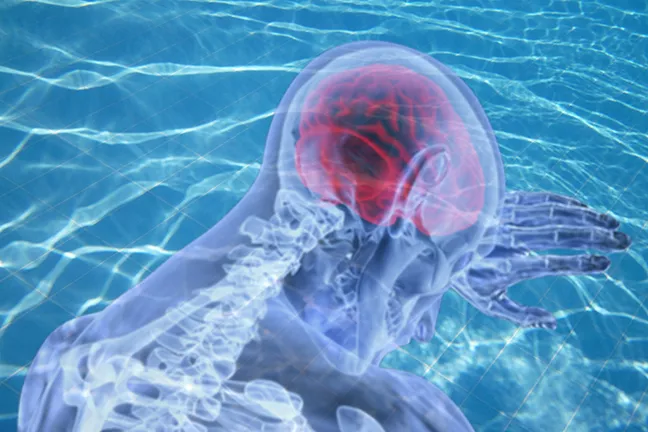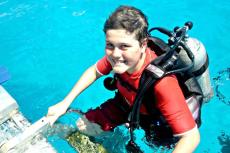Researchers have raised some eye-opening thoughts on nitrogen narcosis, showing that it is something that most divers THINK they understand but few actually do.
Contributed by
Factfile
Simon Pridmore is the author of the international bestsellers Scuba Confidential: An Insider’s Guide to Becoming a Better Diver, Scuba Professional: Insights into Sport Diver Training & Operations and Scuba Fundamental: Start Diving the Right Way.
He is also the co-author of Diving & Snorkeling Guide to Bali and Diving & Snorkeling Guide to Raja Ampat & Northeast Indonesia, and a new adventure travelogue called Under the Flight Path.
His recently published books include Scuba Exceptional: Become the Best Diver You Can Be, Scuba Physiological: Think You Know All About Scuba Medicine? Think Again! and Dining with Divers: Tales from the Kitchen Table.
For more information, see his website at: SimonPridmore.com.
This issue’s column is adapted from a chapter in my book Scuba Physiological: Think you know all about Scuba Medicine? Think Again! The chapters in Scuba Physiological were originally written by scientists in the field of decompression research as part of a three-year project called PHYPODE (Physiology of Decompression). My (self-appointed) task was to rewrite their sometimes-complex research in a form accessible to all divers.
What is nitrogen narcosis?
Nitrogen narcosis is a condition affecting the physical and mental state of people who breathe air or mixtures containing nitrogen (or other inert gases) at pressures greater than 3 to 4 ATA. Conventional scuba diving theory holds that narcosis occurs when molecules of a narcotic gas expand the volume of a hydrophobic membrane—an idea referred to as the “lipid theory.” However, recent studies have discredited this concept and revealed that, in fact, nitrogen narcosis occurs via the production, release and uptake of some brain neurotransmitters.
Everyone is affected by narcosis to some extent when they dive deep. Responsiveness can differ from person to person, but it is commonly accepted that the effects begin at around 30m (100ft), although some people may experience effects of narcosis from 21m (70ft). The signs and symptoms cover a wide range of severity, from mild performance impairment to hallucinations and general anaesthesia. The deeper you go, and the longer you stay, the more severe the symptoms become.
Nitrogen narcosis is a more serious concern than many divers believe. In order to operate effectively underwater, a diver has to master a considerable number of different skills that rely on manual dexterity, motor coordination and both short-term and long-term memory. These skills are essential to staying safe in situations where precise actions and accurate judgement are required. And these skills are the ones adversely affected by nitrogen narcosis.
What causes nitrogen narcosis?
As the underwater environment in which divers operate is markedly different from the surface environment, it seems logical that environmental factors should influence performance and, over the years, the diving community has cited a number of these as contributing to the onset and severity of narcosis, albeit without much scientific evidence. For example, increased partial pressures of CO2 from hard work or heavy swimming are believed to enlarge cerebral vessels, leading to a higher nitrogen presence in the brain. Other supposed environmental risk factors include alcohol use, being hungover, fatigue, anxiety or apprehension, the effects of motion sickness medication, rate of descent, task loading and time pressure stress.
From a scientific point of view, the evidence for most of this is not strong. Claims about whether something exacerbates or reduces narcosis have often been based on fuzzy criteria, and this has led to divers being given some dubious advice. The science shows that all you can really be sure of is that ethanol exacerbates the signs and symptoms of narcosis and amphetamines alleviate them.
There are two ways to try and quantify the effects of nitrogen narcosis. The first is a behavioural approach, measuring task performance such as mental arithmetic, memory, reaction time and manual dexterity. Although these behavioural studies have confirmed progressive deterioration as the surrounding pressure increases, many of the tests are unreliable because motivation, experience and learning can influence the results.
The second approach relies on observing changes in objective, measurable neurological parameters, using electroencephalographic (EEG) recordings and the like. Several recent such studies have been conducted. These were the first to measure the effects of nitrogen narcosis during an entire dive AND for a period of time after the diver surfaces.
Based on lipid theory, diver-training programmes have always advised divers that, in the event of nitrogen narcosis, all they have to do to make the effects go away is ascend to a shallower depth. One of the most remarkable findings from these studies was not only is this not the case, but the actual cerebral impairment caused by nitrogen narcosis persists for at least 30 minutes AFTER SURFACING. So, don’t dive and drive—not immediately anyway.
The studies also provided significant evidence that, when objectively measured, nitrogen narcosis may simply be influenced by pressure and the gas being breathed—nothing else. It seems that the environmental factors I referred to earlier have little or no impact.
Adaptation or tolerance?
The diving community generally believes that divers can adapt to the signs and symptoms of nitrogen narcosis. This belief is based on experiments that reported an initial deterioration in task performance followed by significant improvement. However, on the contrary, scientific tests have generally been unable to confirm any habituation, and researchers have concluded that sport divers do not develop tolerance to nitrogen narcosis.
Instead, it is more likely to be the case that divers who perform the same tasks over and over again gradually find them easier to do, and this may lead them to feel that they have developed narcosis tolerance. They think that they are adapting to narcosis when, in fact, they are just learning to cope with it. A good analogy is habitual drunks who learn to cope with their impaired reflexes, cognitive functions and motor skills. The problem, of course, is that even though they may be able to deal with things better, they are still just as drunk.
Take-home messages
- Nitrogen narcosis can impair a diver’s ability to function effectively or even survive.
- Nitrogen narcosis alters the higher functions of the nervous system.
- Cerebral impairment from nitrogen narcosis persists for at least 30 minutes after surfacing.
- Divers cannot develop tolerance to nitrogen narcosis, but they can learn to cope with it.
- You may feel less “narked” when you ascend from depth, but, objectively, you are still just as “narked.” ■



























